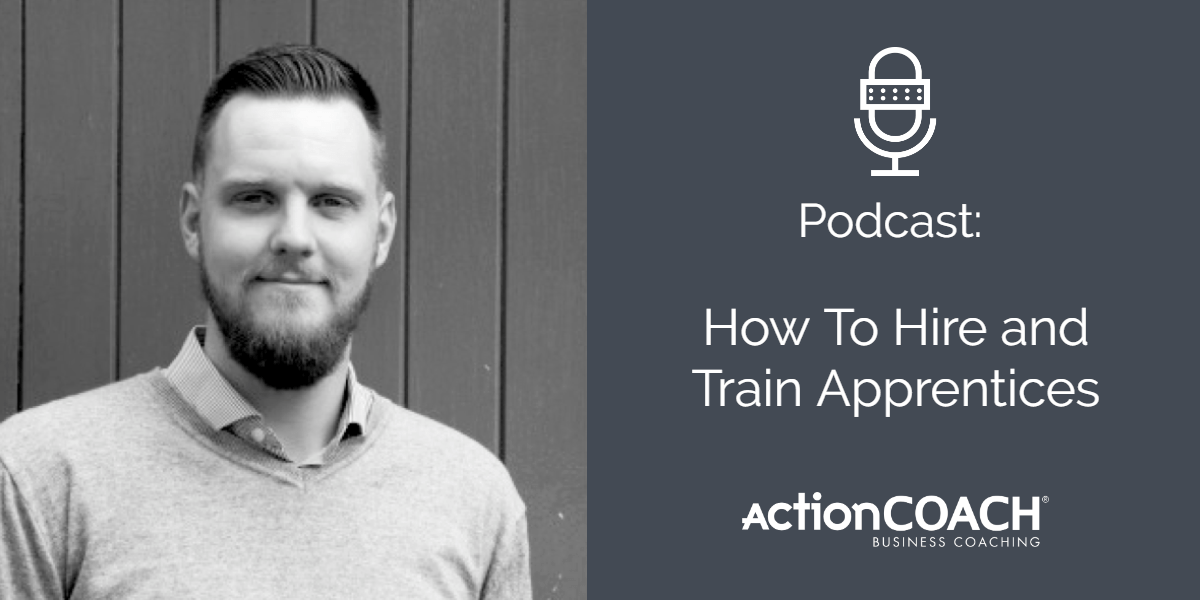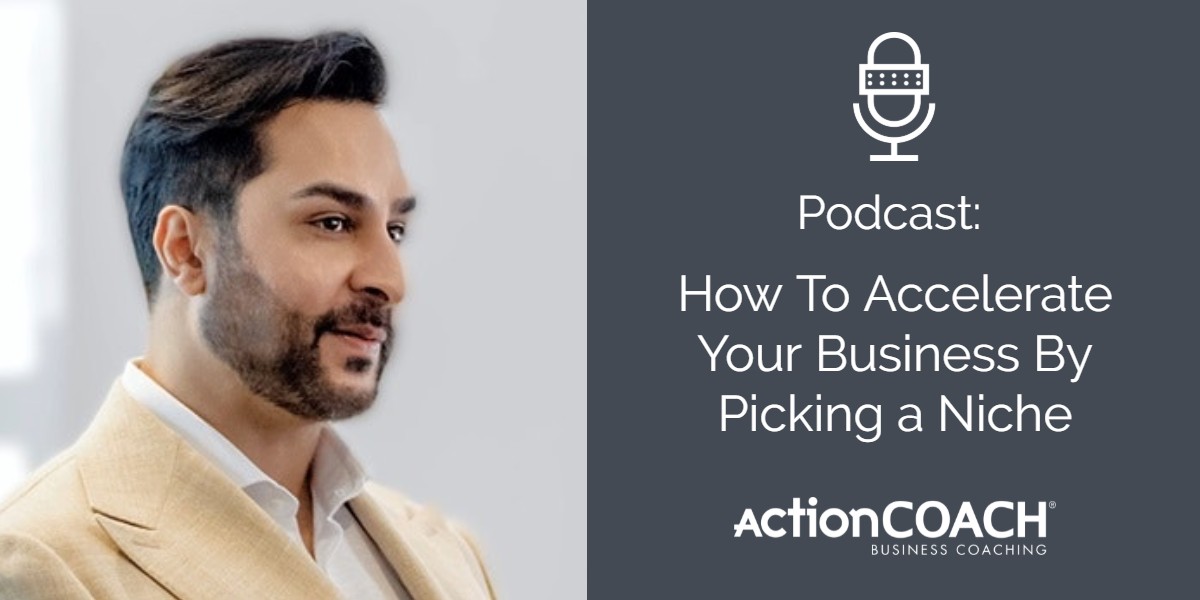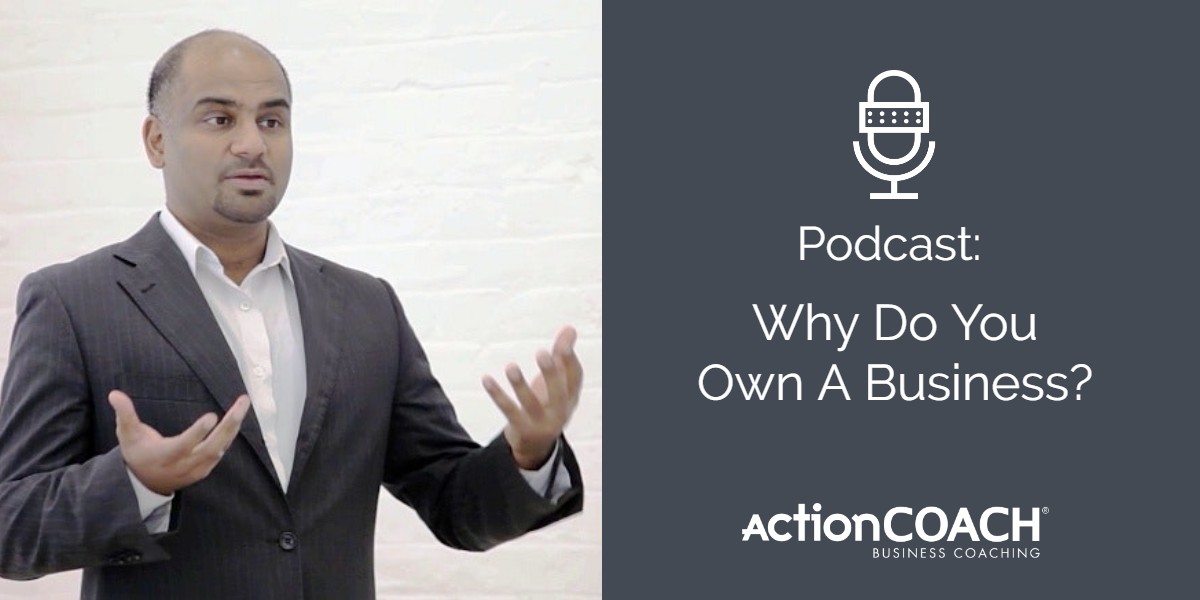Podcast: How To Hire and Train Apprentices
Podcast: Play in new window | Download
In episode 7 we talk to James Nevin Managing Partner at Blue Engineering.
James has grown his Engineering practice from 2 to 30 employees. In his industry making highly technical engineering hires is a major bottleneck. A challenge that he’s solved using the Government’s apprenticeship scheme.
We find out how he does it, how much it costs, what the common pitfalls are and how you can use the same strategy to recruit and train apprentices in your business.
Click the play button above to listen.
Episode highlights
1:25 What is the apprenticeship scheme?
2:49 The funding and tax breaks that you get from the Government
4:58 The structure and management style apprentices need vs traditional hires
7:12 Why James’ apprenticeships last 6 years and what he expects at the end of that time
9:03 The advantages of apprenticeships over traditional recruitment
10:05 The downsides and common mistakes people need to watch out for
Transcript
Bryn: Hello and welcome to The Business Growth Agency Podcast, the home of short, actionable guides that help you and your business to grow. In episode number 7 we talk to James Nevin, Managing Partner at Blue Engineering, about his experiences recruiting and training apprentices.
James We had 180 applications for the job of which we were originally only looking for 3 people. But because they were so good we hired 5 people. 4 of those 5 people turned down a university course to join us – from Russell Group universities. They are all AAB, ABB, AAA A-level students. The intention is, is to drive these people up through the whole hierarchy of Blue so that one day they’ll be running their own teams. Jack our, first apprentice, runs a team at the office – he is one of the 5 teams.
Bryn: Here’s Margarida speaking to James Nevin.
Margarita: Welcome James. What is the apprenticeship scheme?
James: I would say about 20 years ago the Government was putting a lot of emphasis on University – people going to university courses. But in more recent years the Government’s realised that actually there’s this whole strand of education style and type that’s missing because not everyone’s suited to university. Some people learn in a much more hands on way. And so an apprenticeship is working in their job for 4 days a week, and then the 5th day they go off to university or college to study. So there’s always an employer, there’s a learning provider and then there’s the person, the employee, as well.
Margarida: Okay, tell us the story of how you got involved with it.
James: So I never expected Blue Engineering to turn into the size of company that we are now. There’s about of us. Back about 8 years ago there was the two of us and then we needed help with our drawing work, and to help prepare the drawings for our design work. Someone mentioned to me about an apprenticeship. We found someone – Jack, who was our first apprentice – 8 years ago. And at the time, it’s a bit different now, you got grant money. And it was actually profitable to take on an apprentice.
Margarida: By the way, what are the costs? Is it part funded by the Government?
James: As an SME, if for example a university apprenticeship course costs £6,000 a year, we would pay £600 into that pot and the Government pays the rest. And then there’s further, kind of, concessions: if they’re 18 you don’t have to pay anything at all for their first year, then from then on it would be £600 a year. So the costs are very low. It’s an excellent return on investment because salaries are quite reasonable. So we’re quite open about it – we pay our apprentices £13,500 a year to work the 4 days and then they go off to university for one day a week. We’re currently partnered with the University of East London, studying Civil Engineering Degree Apprenticeship. But they are getting their tuition free. So they are saving, on the equivalent of part time, £6,000 a year, and that’s before tax. So for them it’s a really good deal and for us it’s a really good deal. And then the final sweetener on that is that employers NI – you don’t have to pay National Insurance contributions on apprentices, and currently I think that’s on 13%.
Margarida: And how have you found the apprentices? Can you tell us about one and what kind of responsibilities they took on?
James: Many years ago we were taking on 1 apprentice at a time. We would give them drawing work, we would partner them with an engineer and they would very much learn by shadowing and following and us correcting their mistakes and going through that process over and over again until they became good. This year we’ve hired 5 apprentices in one go and so it’s far more organised. We do formal teaching every week. So responsibilities start at very basic level and the difficulty and the responsibility grows. And with the good apprentices it can grow really fast.
Margarida: Did they need a different kind of management style to your other employees?
James: So for a lot of the apprentices we have, you can’t just give them work – dump it and run. You have to hand it over. You have to teach them. It does need some form of structure… supervising them. You’ve got to remember they have probably never had a job before. We used to take on 16 year olds, 17 year olds, 18 year olds. We now only take on 18 year olds. So we take on those with A-levels. We find that for the kind of technical nature of our work, they’re far more ready to dive into some of the more complicated work. Whereas, we’ve found with 16 year olds they weren’t quite ready to have that level of concentration.
Margarida: How do you, kind of, supervise and review their work? It’s – each engineer is responsible for each one of them?
James: At the moment, in the first year, every apprentice is with one of the teams. So there’s 5 teams and so there’s 5 apprentices. And they’re on 3 month rotation. So we rotate them every 3 months. And so with each team they’ll learn the different specialism of the teams. So at Blue each team has a different engineering specialism which partners with the architects and the type of projects that we work on. So each team works with a particular type of architect. And then the apprentices rotate around. So the idea is that after a year and a half they will be very well rounded and will have a really broad range of experience.
Margarida: So the length of this apprenticeship is one year and a half?
James: No, so the course that they’re on – the Degree Apprenticeship Course for Civil Engineering is 6 years – is 6 years. They are in this game for 6 years and I have pre agreed with them what their salary will be every year – it does rise every year. And because we are more organised this year with the teaching we expect people after 6 years to be on a salary far greater than their equivalent would have been had they gone straight to uni and then joined a company
Margarida: I can imagine that after 6 years, this person is absolutely ready to stay with you, to join the team. Or it’s not possible?
James: So it’s a common misconception that apprenticeships are temporary. There are companies out there that will employ apprentices, give them some form of training and get them a certificate in education of some sort, and then they would not employ them to continue. At Blue that is not the intention. The intention is to drive these people up through the whole hierarchy of the Blue so that one day they will be running their own teams, running their own projects.
Margarida: Inside of your business?
James: Inside of our company. So after 6 years they’re not leaving us unless there’s a particular reason, they’re staying with us. Jack, our first apprentice, now runs a team at the offices – he’s one of the 5 teams. Yeah, it’s a common misconception that apprentices are let go at the end of the training period. It’s a really poor strategy to hire an apprentice for 6 or 7 months. Their first couple of weeks – months even – it’s very difficult for them to be fee earning and really contribute to the office. So you can’t treat them as, kind of, temporary workforce. It really wouldn’t work. If your company is that simple that it needs that then you don’t even need the apprenticeship. You can just employ someone at the lowest wage. That said apprenticeship wage can be as.low as £2.50 an hour in some circumstances. Again I wouldn’t advocate that because your getting someone who perhaps isn’t in it for the right reasons. And if you pay a proper salary you will get far more out of someone who is properly driven.
Margarida: Okay James, what are the advantages of this kind of scheme over traditional recruitment?
James: The advantages of taking on apprentices over those who are already in the throws of their career is that you completely get to mould them. They don’t have any bad habits. They will take on the way that your company runs and does it’s work, and they tend to do that very efficiently. The kind of, the flip side to that is they can sometimes need specific advice on things such as ‘you can’t watch a film whilst working’. And their genuine response is ‘oh, but I thought, when I revised for my A-levels, that’s what I used to do, and so I thought it was fine’. And you know that they’re not intentionally taking the piss. They just thought it was okay. So you have to be prepared to evolve their viewpoint on how work is.
Margarida: So jumping to the next question, are there any downsides or common mistakes people need to watch out for?
James: Yeah, I think you’ve just got to remember that they are new, they’ve never had a job before and if they have it’s probably just a bit of fluff on their CV. You can’t dump and run. You can’t dump a load of work and run away, it doesn’t work like that. But once you get them up and running you can give them stuff with set responsibilities and they will do it incredibly efficiently. The learning provider whether that be a college or a university – they’re quite varied. So it’s important that you choose a learning provider who is able to run a good course. And that does mean going and talking to the learning providers and getting a feel for them at the beginning before you go and find your apprentice. Equally when you find a good university or college they will find you the apprentice. They will do the initial leg work for you and check things like eligibility, are they allowed to work in the UK?
Margarida: This, kind of admin…
James: Yeah, there’s a big admin element to it. And they will check eligibility for the university course for example. They check all of that. And then they pre-filter them. So that meant we didn’t have to go through so many applications. So that worked really well.
Margarida: What do you recommend people do if they want to get the most out of their apprentices?
James: I recommend treating them the same as any other hire. So recruit really well, have a proper employment contract so they know where they stand and you know where you stand, read up on the guidance on the Governments apprenticeship pages. Actually the Governments apprenticeship pages are really good. The way you can go and search for apprenticeships… a quick Google search will get you very accurate information quickly, and there’s not reams and reams of page and rules that you need to read – it’s just the front cover sheet, and then typically your accountant or the learning provider will do the legwork. And finally, just to talk about Blue’s experience last year, we had 180 applications for the job, of which we were originally only looking for 3 people. But because they were so good we hired 5 people. 4 of those 5 people turned down a university course, to join us, from Russell Group universities. They are all AAB, ABB, AAA A-level students that have come and joined us. I think that shows that young people entering their careers these days, and their parents, are far more open to the idea of apprenticeships over a traditional degree course. I think people are understanding that this is an excellent way to get debt free education as well as if the employer is a good employer you career will flourish far faster than the traditional route.
Margarida: Thank you very much James
James: Thank you very much
Bryn: If you’ve enjoyed this podcast and you want us to make some more then do let us know by leaving a comment on the The Business Growth Agency Facebook page. Thanks for listening and join us again next time.




